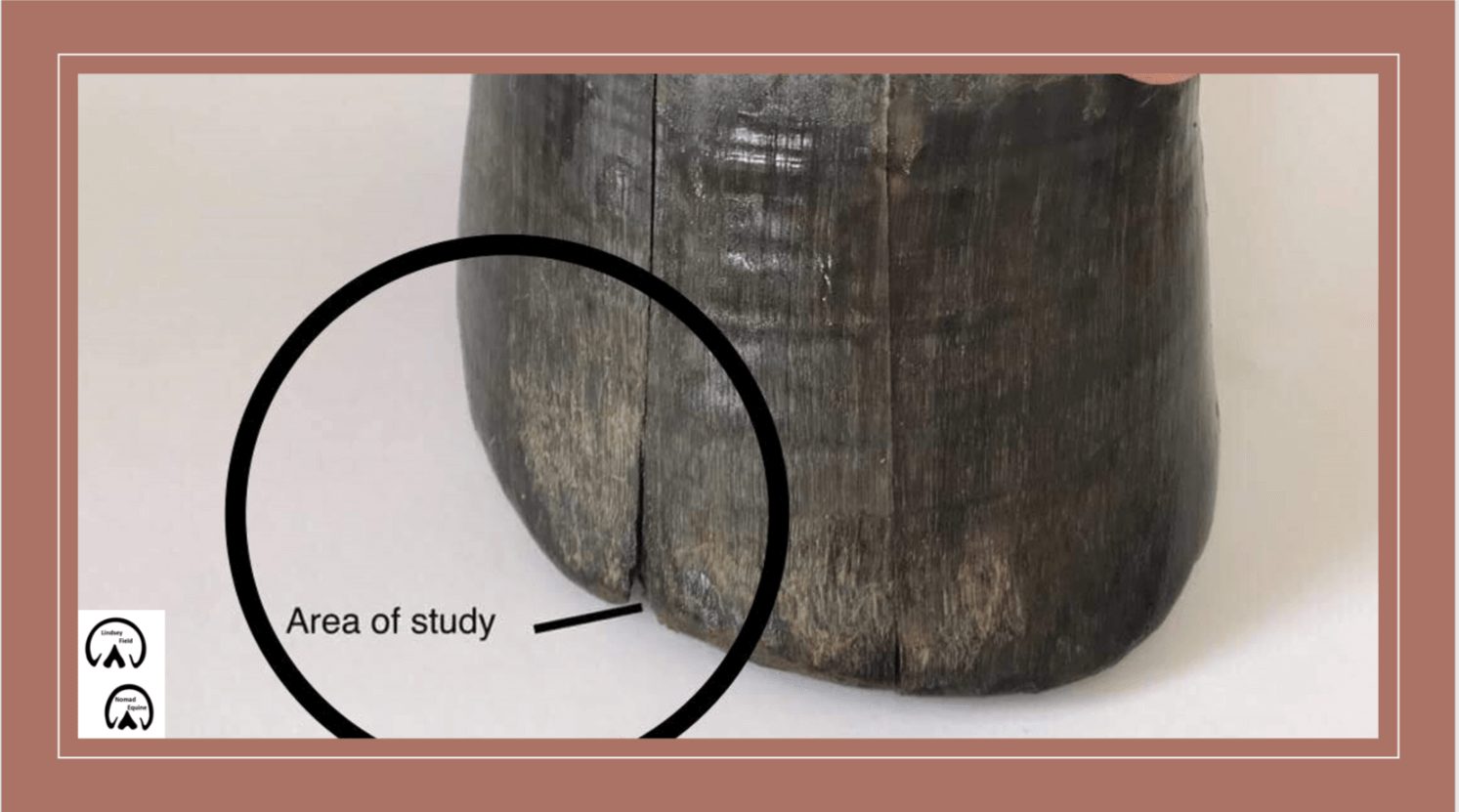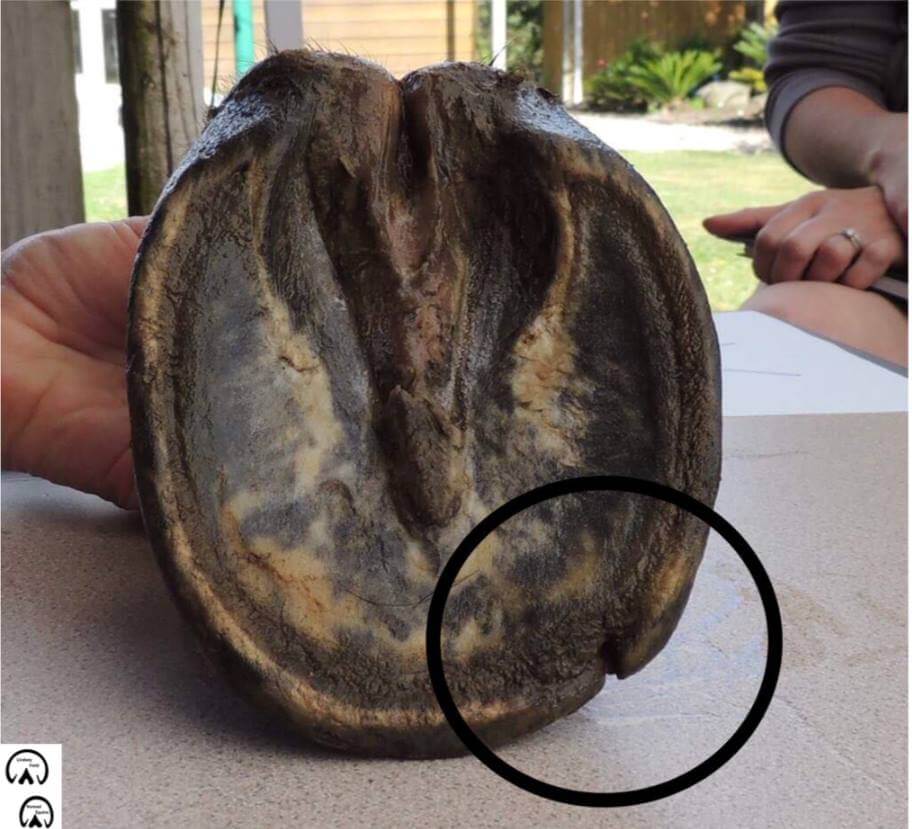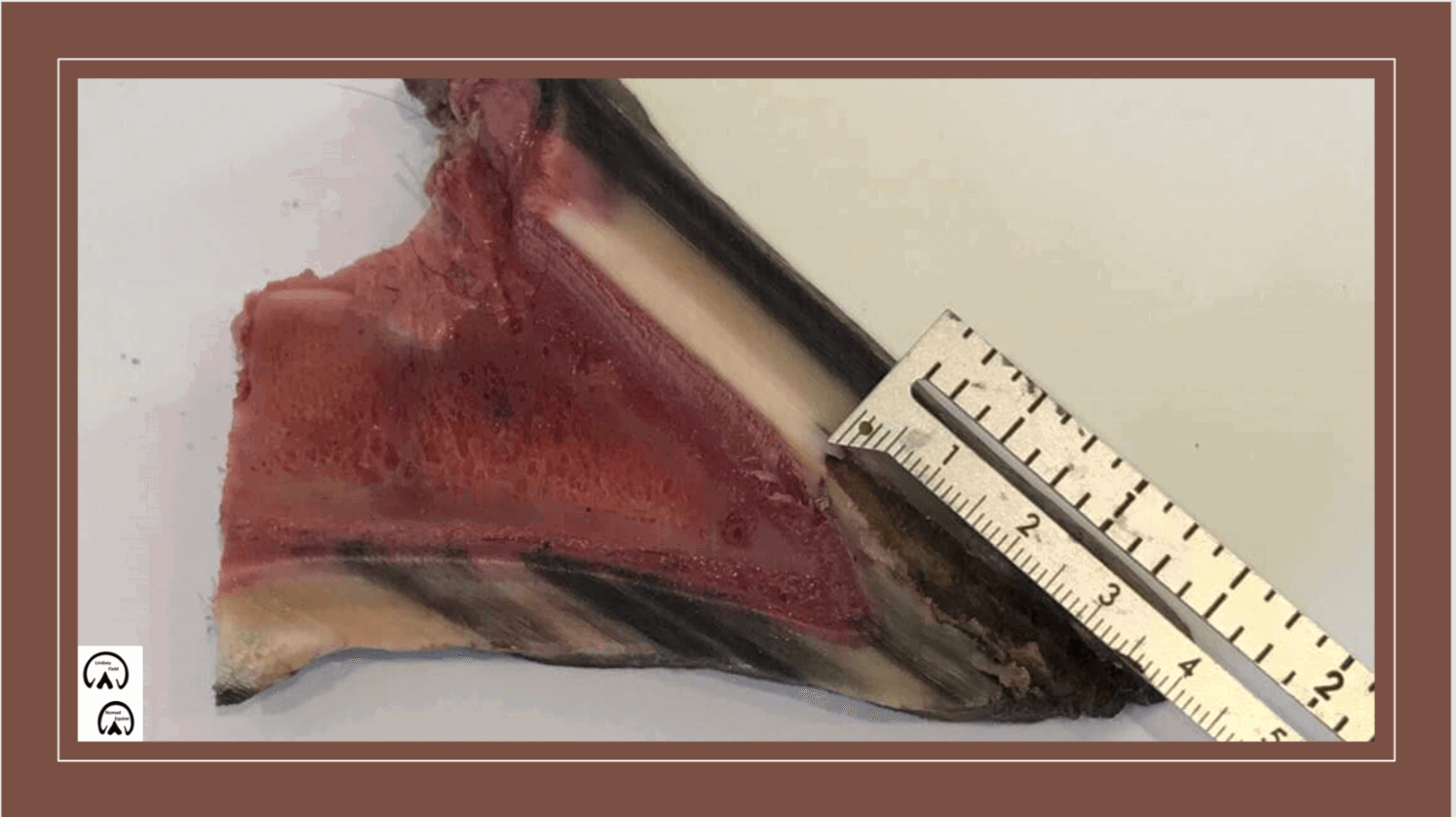Treating white line disease (known as WLD) has created a huge problem for owners, veterinarians, and farriers. Owners have been confused with many different proposed causes and a huge variety of treatments and often feel helpless in knowing what to do. Does it need to be treated or will it disappear without treatment? Well, at Nomad Equine, we take WLD very seriously and we would recommend treating it and not ignoring it. Veterinarians may be unaware of the magnitude of this problem because they only see the severe cases that present for lameness evaluation and/or have apparent radiographic changes. WLD may be a subtle contributor to other causes of lameness within the foot.
Farriers are very aware of this disease because they often have problems in nailing into a compromised hoof wall when shoes are applied. Another problem with WLD is owners having problems with keeping the shoe on between resets. Farriers continually search for treatments that can be applied to the hoof because owners are reluctant to have sections of their horse’s hoof wall removed at the farrier’s recommendation. The best treatment is to resect the hoof wall to allow oxygen to get into the diseased area as this kills the microorganisms. This is quite an invasive treatment and the hoof will look pretty ugly, but it is truly the best treatment. The hoof wall will soon grow back before you know it.
Research, owner education, and continued farrier awareness seems to be the direction of the future.
So what is WLD?
White line disease (WLD) is generally misunderstood yet a prevalent problem that affects the equine hoof capsule, specifically the non-pigmented wall, the wall closest to the internal tissues of the foot. It is a keratinolytic bacteria that feeds on the hoof wall and destroys it. WLD is characterized by a progressive separation of the inner zone of the hoof wall. The separation occurs in the non-pigmented layer at the junction between the stratum medium and the stratum internum. Simply put WLD is in between the wall and the white line and it can travel up the foot to the coronary band.
WLD can affect a horse of any age, sex, or breed. One or multiple hooves may be involved, and the affected hooves can be barefoot or shod. One or multiple horses on the same farm may be affected. The problem occurs worldwide. Multiple causes of WLD have been proposed, but none have been proven yet, our team is working hard on finding these answers. Infectious organisms, bacteria, fungi, or a combination of the two, have been continually incriminated as a cause. What is not known is whether these organisms are primary invaders or secondary opportunists. Given the nature of the pathogens usually isolated (mixed flora of bacteria, Pseudoallsheria and Scopulariopsis fungi), they are probably secondary opportunists, which invade and further damage an existing hoof wall separation.
The mechanical stress placed on the hoof wall that leads to a separation seems to be the logical cause of WLD. These stresses would include excessive toe length, poor hoof conformation, and various hoof capsule distortions such as long toe-under run heel, clubfoot, or sheared heels. Damage to the stratum medium/laminar junction causes increased stress on the remaining attachment. Weight-bearing, and the force of the deep digital flexor tendon will cause cycling to occur, further weakening the bond. As the sole/wall junction becomes further damaged, it removes all remaining exterior protection, allowing for the separation to increase. In early stages of WLD you may see a deviation of the white line inwards to the sole, this will be packed with a fine grit, in which allows entry of the bacteria and fungus into the hoof wall to start feeding in the inner hoof wall.
Treatments Managing a horse with WLD must be performed diligently and aggressively to prevent further separation and irritation to the capsule. The infection must be completely cleared and the hoof wall allowed to grow out the damaged hoof wall. If the owner does not want to go the route of a wall resection, then we suggest plugging the hole with cotton wool soaked in white line treatment including copper sulfate. This should be replugged every 3 days. Pretty soon the hoof wall ideally will grow down, and the hole will grow out. It is to note the hot shoeing process has proven effective in collecting WLD.
The take-home message is to: Always treat WLD, don’t ignore it. Balance hoof capsule, manage hydration content, remove all infected non-pigmented wall, protect the area and finally watch your equine companions hoof transform!
References:
Nomad Equine Research Team – WLD-Thrush. Canadian Advanced Farriery
– WLD O’Grady SE. White line disease—an update. Equine Vet Edu 2001; 3:66-72. Turner TA. White line disease. Equine Vet Edu 1998; 4:73-76.
The study of the equine hoof – Lindsey Field
Search
Recent Articles
Categories
- Advice Hub
- Athlete
- Carriage Driving
- Dentistry
- Dressage
- Endurance
- Eventing
- Farrier
- Featured
- Featured Horse Ads
- Featured Posts
- Horse Racing
- Horse's Mouth
- Horseball
- Hunting
- Le Trec
- Leisure Riders
- Mounted Games
- Nutrition
- Polo
- Polocrosse
- Reining
- Rescue & Rehabilitation
- Show Jumping
- Showing
- Tack Room
- Team Chasing
- The Pony Club
- Therapy
- Training
- Vaulting
- Veterinary







